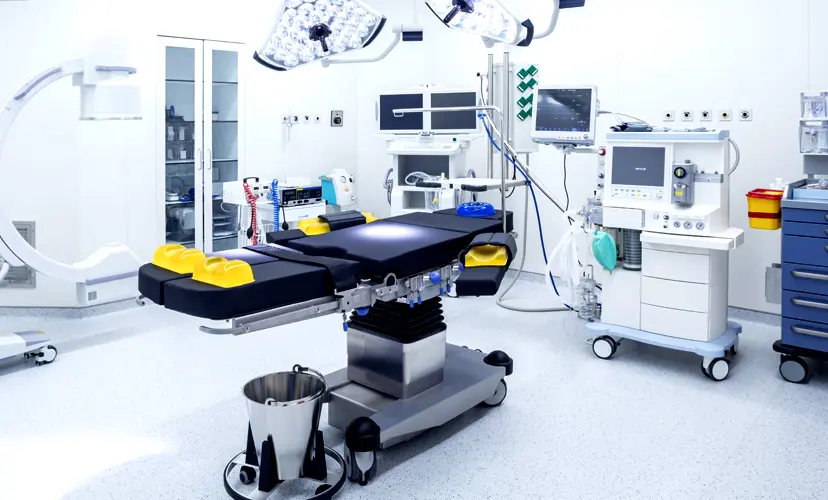It’s imperative that operating rooms be kept clean in order to ensure patient and healthcare staff safety from harmful microorganisms. Terminal cleaning is typically carried out after an operating room has been used to treat a patient with a multidrug-resistant organisms (MDROs) infection.
MDROs, like Methicillin Resistant Staph aureus (MRSA), Vancomycin Resistant Enterococci (VRE) and Clostridioides Difficile Infection (CDI or C-diff), are resistant to several different types of antibiotics.
Terminal cleaning must be conducted on an operating room after it’s used to treat patients with MDRO infections to prevent the spread of these deadly contagions.
What is Terminal Cleaning?
Terminal cleaning refers to the cleaning procedures used to control the spread of infectious diseases in a healthcare environment.
While methods vary between healthcare institutions, medical facility cleaning services usually include:
- Removing all detachable objects
- Disinfecting lighting and air duct surfaces
- Cleaning everything downward to the floor
Items removed from the room are disinfected or sanitized and returned.
Terminal Cleaning of Operating Rooms: How To
The first step in terminal cleaning is for staff to suit up in barrier garments, including face masks, gloves and booties, in order to prevent the spread of microorganisms outside of the contaminated room.
After staff have properly suited up, they will:
1. Remove all detachable objects from the room in order to disinfect them in specified controlled environments. This allows them to be returned after the terminal cleaning has taken place.
2. Use approved cleaning chemicals to disinfect the room from the ceiling to the floor.
3. Start by cleaning all lighting fixtures and grates adorning the ceiling, working down to the walls and eventually the floor.
If there’s equipment or instruments that can’t be removed from the room before cleaning, they must be scrubbed and disinfected thoroughly. For those items, staff must:
4. Completely disinfect wheels, pads, railings and any other surface of equipment to ensure the most thorough disinfecting of the operating room takes place.
Once the room has been deemed safe for further use, disinfected machinery and equipment that was initially removed can be reinstalled in its proper place for future use.
All barrier garments should be disposed of, with gloves being last. All the garments should be placed in a plastic bag and sealed before being disposed of, or sent to a facility with regulated cleaning processes.
Terminal Cleaning of Operating Rooms: Electrostatic Spray Disinfection
Electrostatic spray disinfection is a comparable alternative to terminal cleaning of operating rooms; as it is a hands-free way to easily cover surfaces with an electrically charged mist.
With the disinfecting mist being charged, the spray easily wraps around the surfaces of machinery, light fixtures and other odd surfaces all while being sprayed from one angle. Electrostatic spray can be used in conjunction with other terminal cleaning techniques in operating rooms to help ensure a thorough disinfection before the room is reused.
Questioning the efficiency of your cleaning staff when it comes to terminal cleaning of your operating rooms and healthcare facility at large? Contact us today for a free consultation.

